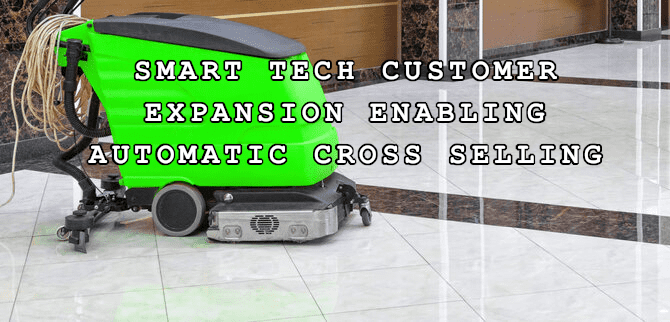
04 Nov Smart Tech Customer Expansion Enabling Frictionless Cross Selling
I’m old school when it comes to writing. By the time you read this I’ve probably printed and edited this article by hand 10 times. I’m also kind of cheap, at least for some things. I get the razor/razor blade biz model, but I always felt gouged when buying printer cartridges. So I used to do whatever I could to reduce their cost, even if it meant wasting hours of time searching out and buying aftermarket refilled jumbo cartridges to save a measly 30 or 40 bucks. It’s the principle, right?
When I moved on to my latest printer, a smart printer, I was intrigued by the accompanying offer: ink cartridges as a service based on consumption, in this case, based on the number of pages printed. Through an internet connection and embedded code, HP knows how many pages I’ve printed and when my ink is running low so they can send me fresh ink cartridges before I run out. It’s so easy and fair I signed up for the subscription. A couple of years in and it’s turned out to be a win-win. For me, it’s a low-friction equitable exchange in value. For HP, it’s a brilliant customer expansion strategy.
Upselling and cross selling has been done in this way for years in the software industry. Now this strategy can be applied by makers of physical products… if their products are smart. Smart tech puts this revenue growth driver on steroids, and it all starts with maintaining the customer relationship.
There are good reasons for every company to double down on customer expansion, that is, selling more products to their existing customers. Existing customer relationships mean higher conversion rates. Also, higher margins since customer acquisition costs are lower. And it’s a proven way to increase customer lifetime value. Upselling and cross selling has been done in this way for years in the software industry. Now this strategy can be applied by makers of physical products… if their products are smart. Smart tech puts this revenue growth driver on steroids, and it all starts with maintaining the customer relationship.
Unlike with traditional products, manufacturers of smart products don’t loose touch with customers after the sale. The smart product’s virtual connection provides a 24/7 window into their customer’s world. Code within the product allows these companies to analyze how their customers use their product and what they use it for. This pays off in a number of significant ways. The specific payoff for customer expansion is knowing when the customer needs a related product – in my example, a printer cartridge.
Smart digital can also be used to boost customer expansion in other ways too, such as: personalized marketing based on product usage, new product recommendations ala Netflix, a maintenance required light ala a car’s dashboard, in-product upgrades and land & expand strategies, long used by SaaS companies… and now available to physical products.
Based on my experience with cutting fluids, grinding wheels and gaskets, this way of cross selling is perfect for industrial consumables.
Based on my experience with cutting fluids, grinding wheels and gaskets, this way of cross selling is perfect for industrial consumables. For companies that produce both the machine and the consumable, making the machine smart will greatly improve the cross-sell conversion rate. For companies that don’t sell both, it points to a winning partnership or rollup strategy. But this play is not limited to industrials. Picture any product that consumes other products or services. Making it smart bulks up cross selling by making it automatic.
Smart digital improves existing customer expansion strategies and enables new ones for physical products, services and environments, that until now were only available to software companies. Automatic consumable cross selling can be emulated in the industrial sector and any other sector where one product depends on another product or service to operate.
HOW IT’S DONE
Understanding when the machine or equipment (product 1) needs the consumable (product 2) requires both to be digitized. Product 1 is connected to the cloud through the internet of things and receives data from product 2 through an internal network. Product 2, or more specifically its bracket/holder/container, is instrumented with sensors to detect when the consumable needs to be replaced. Product 2 communicates with product 1 which communicates with the maker, operator or servicer of product 1 through the internet.
Contact us if you’d like to understand more or to schedule a free 30-minute consultation if you have a company to improve.






